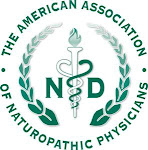
Photo by Honou, via Flickr, under the Creative Commons License.
Another excellent reference to keep on hand! Developed by the Academic Consortium of Complementary and Alternative Health Care, the Clinicians and Educators’ Desk Reference, is a handy guide to the five licensed complementary and alternative healthcare professions. It has been vetted by experts in each field, and provides information on emerging fields of traditional world medicines, holistic nursing, and holistic and integrative medicine.
The American Massage Therapy Association Council of Schools, the Association of Accredited Naturopathic Medical Colleges, the Association of Chiropractic Colleges, the Council of Colleges of Acupuncture and Oriental Medicine, and the Midwifery Education Accreditation Council were instrumental in the organization and information development. In addition, the American Holistic Nurses Association, the American Holistic Medical Association, the American Medical College of Homeopathy, the Consortium of Academic Health Centers for Integrative Medicine, the International Association of Yoga Therapists and the National Ayurvedic Medical Association also contributed to the content.
Naturopathic input was provided by Paul Mittman, Michael Traub, and Pat Wolfe. Authors wrote to a template which provides key information on the profession, its standards, regulatory status, and more. Each chapter covers one discipline and provides the following information (and much more!) for that discipline: Philosophy, Mission, Goals, Clinical Care, Approach to Patient Care, Scope of Practice, Referral Practices, Education, Schools and Programs, Curriculum Content, Faculty and other Training Information, Accreditation, Regulation and Certification, Regulatory status, and Organizations and Websites.
This reference can be helpful when responding to patient questions regarding other disciplines, as well as when referring patients to those same disciplines. Admittedly I would not call this edge of my seat reading, yet I find that it is a great resource. We know what we do as naturopathic physicians, but what do we know about the details of those other approaches that we find patients also utilizing? Having additional information about those approaches might help us to better select which one is a better fit for referral for our patients. So give it a read – it’s a short 124 pages, and packed with useful information!




No comments:
Post a Comment